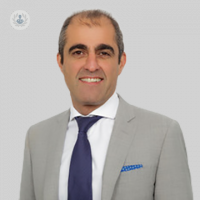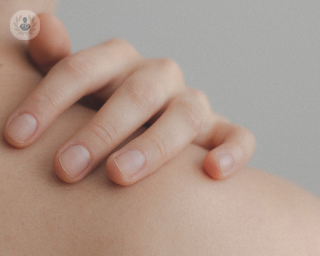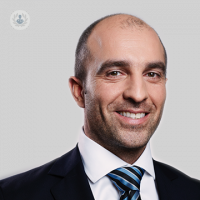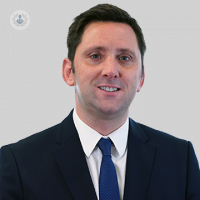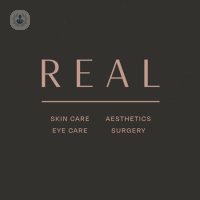Liposuction
Mr Navid Jallali - Plastic surgery
Created on: 11-13-2012
Updated on: 06-05-2023
Edited by: Conor Dunworth
What is liposuction?
Liposuction often called ‘lipo’, is a fairly common cosmetic procedure aimed at removing unwanted body fat from certain parts of the body. There are various different types of liposuction:
Tumescent liposuction – this method of liposuction is also known as ‘local liposuction’, as it often just needs local anaesthetic instead of the general anaesthesia that other types of liposuction calls for. This lowers the risks associated with general anaesthesia.
Ultrasound-assisted liposuction – this method of liposuction is performed with the help of ultrasound. It allows for much more precise removal of the fat, preserving nerves surrounding the areas of fat, and removing very stubborn areas of fat.
Laser-assisted liposuction – this is a newer method of liposuction that liquifies the fat before it is removed, with the help of laser technology.
Surgical liposuction is also referred to as liposculpture and may be carried out to remove excess body fat in combination with an abdominoplasty, or ‘tummy tuck’.
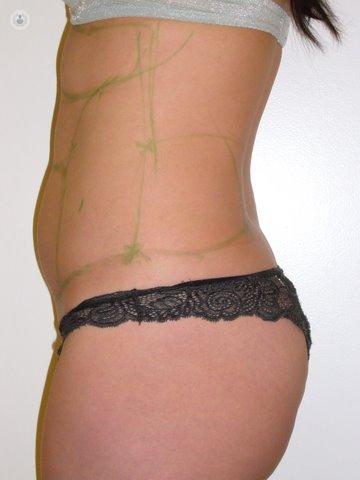
What are the reasons for undergoing a liposuction procedure?
People may choose to undergo liposuction for a number of reasons all revolving around a general dissatisfaction about the shape of their body. Often, even after exercise and dieting, excess fat can remain in some places. Due to its immediate results, liposuction can greatly boost a person’s confidence.
Liposuction may also be used on people who are not necessarily overweight but rather unhappy with their physical appearance. Other reasons to undergo liposuction include reducing fat production, improving one’s health, and stimulating collagen growth.
How is liposuction performed?
Liposuction involves sucking excess fat out through a tube. After marking the parts of the body to be treated, the surgeon then injects the area with medication and anaesthetic-containing solution that reduces blood loss as well as bruising and swelling.
Fat cells are then broken up in order to make them easier to extract before a small incision is made and a suction tube is inserted. The tube is moved around the area in order to suck out the fat. After, excess fluid and blood is drained before the patient is stitched up and bandaged.
The operation usually lasts around one to three hours, and is carried out using a general anaesthetic or epidural anaesthetic in lower areas of the body. The patient usually has to remain in hospital overnight.
Is liposuction a painful procedure?
As liposuction is usually performed under general anaesthesia, it is not a particularly painful procedure. However, the patient can be very sore once they wake up, and this can be addressed with painkillers.
How can you prepare for liposuction?
In order to prepare for liposuction surgery, the patient may be recommended not to take specific medications, such as blood thinners, for at least two weeks before the operation. Liposuction preparation depends on each individual, and a specialist will provide advice on what to do beforehand.

What does post-surgical care consist of?
After liposuction, the patient may have to take antibiotics in order to reduce the chances of infection. Compression bandages or an elasticated support corset are fitted in order to reduce bruising and swelling. These are worn for several weeks post-operation.
In some cases, such as when a large area of fat is removed, some time off work may be necessary. If the patient had a general anaesthetic, they won’t be able to drive for a few days. Full recovery after liposuction surgery generally takes two weeks.
How long do you need to rest after liposuction?
Within a week of their liposuction procedure, most patients are able to return to most of their daily activities. It can take up to six weeks for the patient to return to work, but some can go back to work almost straight away. You can discuss this with your doctor before the procedure. Complete recovery after liposuction can take up to six months.

What should I avoid doing after liposuction?
After a liposuction procedure, patients should avoid partaking in exercise, drinking alcohol and eating high-fat, salty foods. Your doctor will tell you when you can go back to doing these activities.
Is liposuction safe?
As with all surgical procedures, there are some risks that come with liposuction, although these are rare. Liposuction is a serious procedure, with some risks including:
- Complications with the anaesthesia used
- Damage to the nerves surrounding the area of fat being removed
- Injuries to organs
- Blood clots
- Fat clots
- Infections
- Seroma
- Haematoma
- Seroma
- Oedema
Despite the possible risks, these seldom occur and the vast majority of patients have no issues, and liposuction is generally considered a safe procedure.
Can I get liposuction more than once?
Yes. It is possible to get liposuction more than once on the same area of the body, but it is essential that at least six months pass between the procedures. This is to allow your body to fully recover from the previous liposuction procedure. However, if the patient undergoes multiple procedures, the risk of uneven liposuction results increases.

How long do the results of liposuction last?
This depends on a number of different factors, with the main one being the patient’s commitment to maintaining a healthy diet and regular exercise routine. Some patients expect liposuction to be a permanent “quick fix”, but this is not the case.
What specialist undertakes liposuction procedures?
The specialist that undertake liposuction are plastic surgeons, cosmetic doctors and aesthetic specialists.
